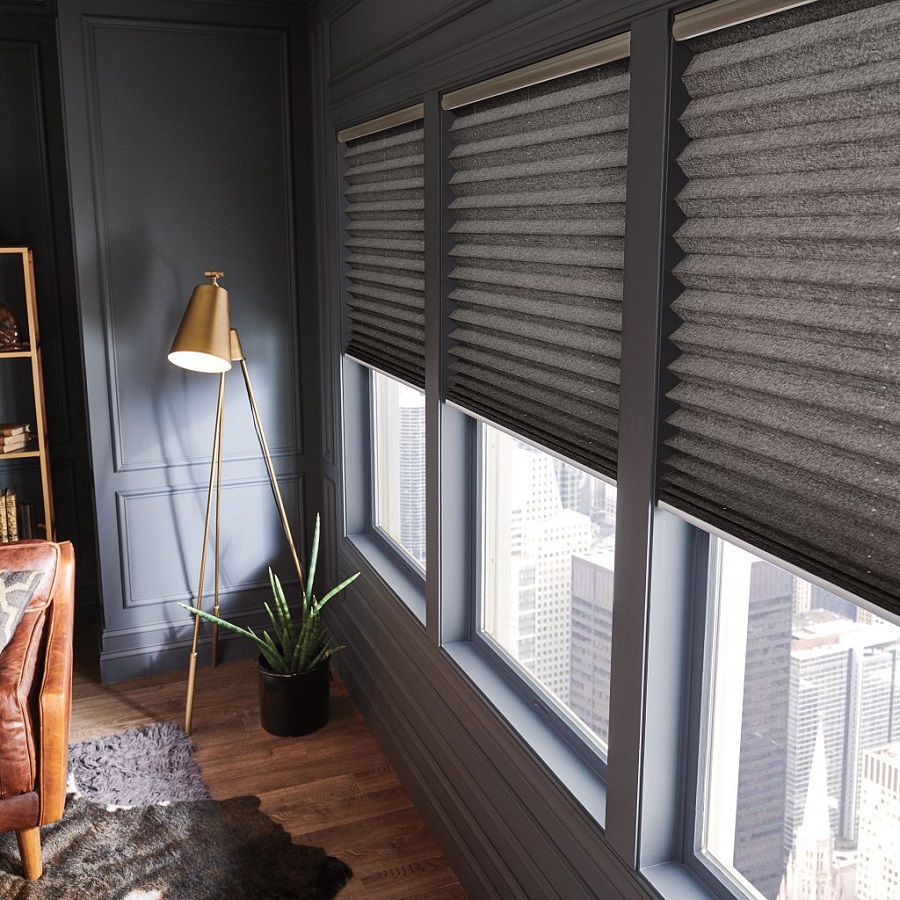Introduction
Blinds are a beautiful and functional addition to any room, providing privacy, controlling light, and enhancing the aesthetic appeal of your living space. However, managing them, especially lowering them effectively, can sometimes seem a chore. This guide aims to make the process simple and straightforward, so you can enjoy the benefits of your blinds without any hassle.

Understanding Your Blinds
Before you begin the process of lowering your blinds, it’s essential to understand the various types of blinds. Each type may have slightly different mechanisms for operation. Here are some common types:
- Horizontal Blinds: These are made of slats that can be tilted and pulled down or raised.
- Vertical Blinds: These consist of vertical panels that can be slid to the side or tilted.
- Roller Blinds: These are made of a single piece of fabric that rolls up and down.
- Roman Shades: They fold up in sections when raised, giving a classic look.
- Cellular Shades: Consisting of honeycomb cells that provide insulation.
Each type has its features and operations, but the basic idea of lowering them remains quite similar.
Preparing to Lower Your Blinds
- Gather Your Tools: For most blinds, you won’t need any tools, but keeping a step stool handy for taller windows might be helpful.
- Clear the Area: Make sure the space around the window is clear of furniture or obstructions.
- Check the Mechanism: Familiarize yourself with the mechanism. Most modern blinds are equipped with either a cord or a cordless system.
Lowering the Blinds
Horizontal Blinds:
- Using a Cord:
- Grasp the cord that controls the blinds.
- Pull the cord straight down gently to release the locking mechanism.
- Simultaneously, guide the slats evenly downward until the blinds are in your desired position.
- Cordless Blinds:
- Grab the bottom rail of the blinds.
- Pull down gently until the blinds reach your desired height, then release to lock them in place.
Vertical Blinds:
- Using a Chain or Wand:
- If your vertical blinds have a wand, gently rotate it to the open position.
- Pull the chain or the wand towards you to slide the blinds open.
- To lower them, simply slide the individual panels to the side until they are at your desired position.
Roller Blinds:
- With a Cord:
- Find the pull cord attached to one side of the roller.
- Pull the cord down smoothly to lower the blind.
- To stop at a desired level, release the cord and allow the roller to catch.
- Cordless Roller Blinds:
- Hold the bottom bar and pull it down gently.
- Stop when you reach your desired height.
Roman Shades:
- Pull the fabric down gently from the bottom.
- Allow the folds to stack up as they lower.
- Stop at your desired height.
Cellular Shades:
- Grasp the bottom rail of the shade.
- Pull down slowly until it reaches your desired level.
- Release to lock the position.
Troubleshooting Common Issues
Sometimes, you might face challenges while trying to lower your blinds. Here are a few common problems and solutions:
- The Cord is Stuck: If the cord won’t move, check to see if there are any tangles or knots holding it back. Give it a gentle tug to free it if necessary.
- Blinds Won’t Lower Fully: Ensure that there’s no obstruction in the way, and the slats or panels aren’t caught. Gently wiggle the mechanism if needed.
- Uneven Blinds: If the slats are not lowering evenly, check the tilt mechanism to ensure it’s operating correctly. Adjust individually if necessary.
- Cordless Doesn’t Work: If your cordless blinds won’t lower, check the mechanism for any obstructions or damage. Sometimes, it may need a clean or adjustment.
Maintenance Tips
To ensure smooth operation of your blinds and keep them looking great, follow these maintenance tips:
- Regular Dusting: Dust your blinds regularly using a microfiber cloth or a feather duster.
- Spot Cleaning: If stains occur, use a damp cloth with mild soap to gently clean the spots.
- Inspect Mechanisms: Periodically check for any loose parts, frayed cords, or damage to ensure they function correctly.
- Lubrication: For blinds with tilting mechanisms, a small amount of silicone spray can help them operate more smoothly.
- Avoid Over-Tugging: Be gentle when pulling on the cords or bars to prevent accidental damage.
Understanding the Types of Blinds and Curtains
Before diving into the practical tips for lowering your blinds, it’s essential first to understand the different types available. There are several common types of blinds and curtains, each with unique operating mechanisms.
- Vertical Blinds: These consist of vertical slats that can be rotated or drawn to one side. They are often used for large windows or sliding glass doors.
- Horizontal Blinds: Typically made of wood, faux wood, or aluminum, these blinds are made up of horizontal slats that can be tilted to control light and privacy.
- Roller Shades: A type of blind made from fabric that rolls up and down on a spool. Roller shades are straightforward to operate and accessible in various materials and patterns.
- Roman Shades: These fabric shades fold up in horizontal pleats when raised and lay flat when lowered. They add a touch of elegance to any room.
- Sheer Curtains: While not blinds, sheer curtains allow soft light to filter through while providing minimal privacy. They can be combined with other window treatments for a layered look.
Operating Mechanisms
Understanding how your specific type of blind or curtain operates is crucial. Most commonly, they operate via:
- Cord Pull: A traditional mechanism where pulling a cord releases or raises the blind or shades.
- Cordless: Found in many modern designs, these blinds can be lifted or lowered with a simple push or pull on the bottom rail, eliminating unsightly cords.
- Remote Control: Particularly for motorized blinds, remote controls allow you to operate your window treatments with ease.
- Smart Home Integration: Some advanced blinds can be connected to your smart home system, enabling you to control them via voice commands or an app on your smartphone.
Tips for Effortlessly Putting Down Your Blinds
Now that you have a basic understanding of different types of blinds and their operating mechanisms, let’s delve into practical tips for putting them down effortlessly.
Familiarize Yourself with the Mechanism
Take a few moments to understand how your blinds operate. Whether it’s pulling a cord, pushing a tab, or using a remote control, familiarity will help you navigate the process smoothly. Don’t hesitate to read the manufacturer’s instructions if available.
Inspect the Blinds Regularly
Like any other household fixture, blinds require maintenance. Regularly inspect the cords, slats, and mechanisms for wear and tear. If you notice any issues, such as fraying cords or stuck slats, address them promptly to avoid frustration when lowering or raising your blinds.
Use Both Hands When Necessary
For certain types of blinds, especially horizontal and vertical, using both hands can significantly simplify the process. While one hand operates the cord or tab, the other can gently hold the mechanism to avoid jerking movements that may cause damage or difficulty in operation.
Employ a Steady Motion
When pulling down your blinds, use a steady and smooth motion. Jerking or pulling too hard can cause slats to misalign or even break. If your blinds are particularly stiff, take the time to carefully work them down instead of forcing them.
Practice Regularly
Like any other skill, putting down your blind can improve with practice. Make it a habit to engage with your window treatments daily, gradually building your confidence with their operation. Over time, this practice can make the process feel second nature.
Keep Cords Organized
If you have corded blinds, keeping the cords organized will help avoid tangles and make it easier to operate them. Consider using cord cleats which securely hold excess cord in place, keeping it out of reach from pets or small children.
Use Motorized Blinds for a Hands-Free Experience
If you find traditional blind cumbersome, consider upgrading to motorized options. A remote control or smart device can operate these blinds with just a click, making them exceptionally convenient for hard-to-reach windows or for those with mobility issues.
Add a Decorative Touch
Sometimes, the motivation to keep your blinds in perfect shape comes from aesthetic appeal. Selecting beautiful blinds or curtains that complement your decor can enhance your space, encouraging you to operate and maintain them regularly.
Engage with the Community
Join online forums or local homeowner groups where members share their experiences and tips related to blinds and curtains. Engaging with others can provide you with valuable insights and new techniques.
10. Map Out a Routine
Incorporate putting down your blind into your daily routine. Perhaps it’s part of your morning ritual or an evening wind-down. Having a consistent time to engage with your window treatments ensures they are used regularly and maintained properly.
Conclusion
Mastering the art of putting down your blind doesn’t have to be a chore. With the right knowledge, tools, and techniques, the process can become second nature. Remember, familiarizing yourself with the type of blind you own and maintaining them regularly can make all the difference. Whether you opt for traditional corded blinds or choose a modern motorized solution, taking the time to understand and care for your window treatments will lead to a more comfortable, beautiful home. Embrace the process and enjoy the results!


